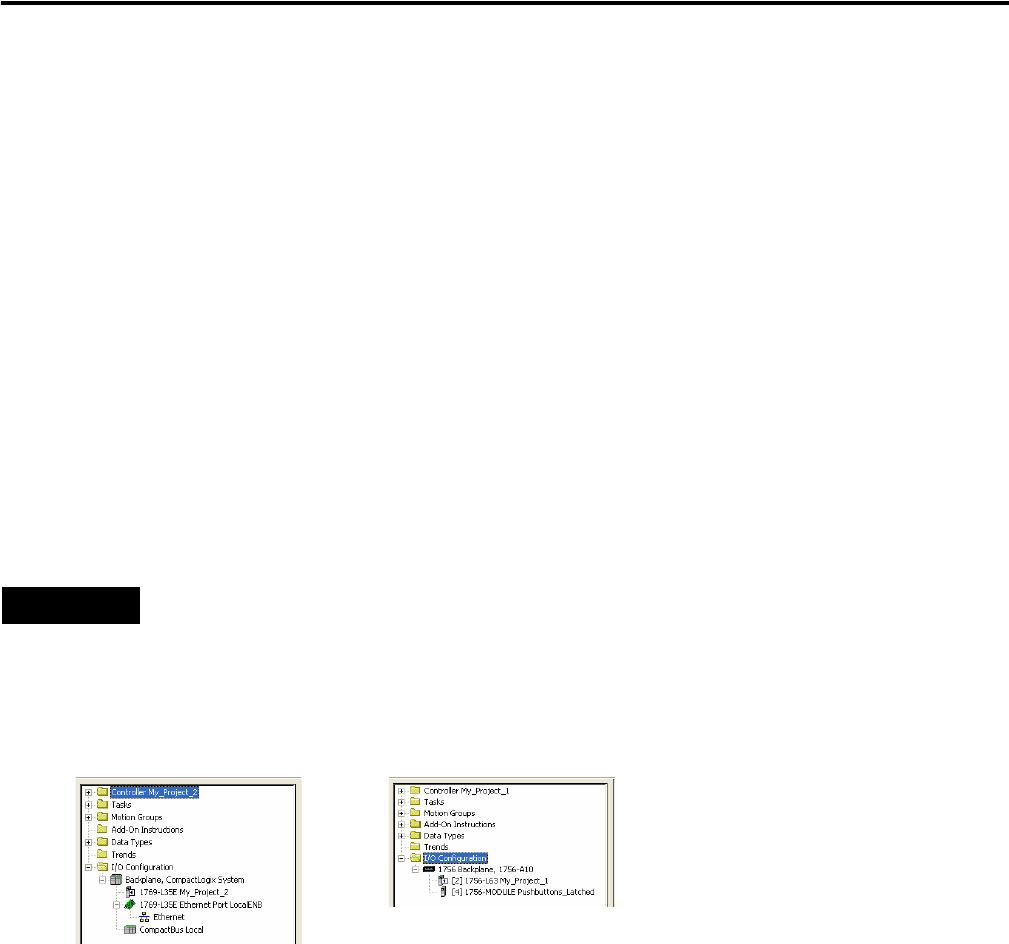Quick Start Owner's manual
Table Of Contents
- 1756-QS001E-EN-P, Logix5000 Controllers Quick Start
- Summary of Changes
- Table of Contents
- 1 - Program and Test a Simple Project
- What You Need
- Before You Begin
- Follow These Steps
- Create a Project for the Controller
- Add Your I/O Modules
- Look at Your I/O Data
- Ladder Logic
- Enter a Function Block Diagram
- Assign Alias Tags for Your Devices
- Establish a Serial Connection to the Controller
- Download a Project to the Controller
- Select the Operating Mode of the Controller
- 2 - Organize a Project
- 3 - Program Add-On Instructions
- What You Need
- Follow These Steps
- Insert an Add-On Instruction
- Copy an Add-On Instruction Definition
- Import an Add-On Instruction Definition
- Access a Parameter That Is Not Visible
- Monitor or Change the Value of a Parameter of an Add-On Instruction
- View the Logic of an Add-On Instruction
- Edit and Monitor an Add-On Instruction
- Update an Add-On Instruction to a Newer Revision
- 4 - Program an Equipment Phase
- 5 - Program a Project Offline
- 6 - Document a Project
- 7 - Go Online to the Controller
- 8 - Program a Project Online
- 9 - Troubleshoot the Controller
- Index
- Back Cover

Publication 1756-QS001E-EN-P - October 2009 15
Program and Test a Simple Project Chapter 1
Conventions for Names
Throughout a Logix5000 project, you define names for the different elements of the project, such as the
controller, data addresses (tags), routines, and I/O modules. As you enter names, follow these rules.
• Only letters, numbers, and underscores (_)
• Must start with a letter or an underscore
•≤ 40 characters
• No consecutive or trailing underscores
• Not case sensitive
Add Your I/O Modules
To communicate with an I/O modules in your system, you add the modules to the I/O Configuration folder
of the controller. The properties you select for each module defines the behavior of the module.
1. Right-click the I/O Configuration folder and choose New Module.
TIP
The screens shown are representative of three types of controllers; other types are available, but are not
shown here.
CompactLogix
Controller
ControlLogix
Controller










